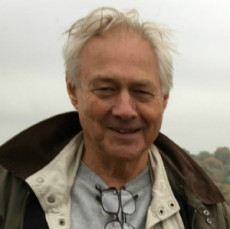Tuzla, June 14: Earlier in the week, before we went to Srebrenica, Pia and I visited the Tuzla field center of the International Commission on Missing Persons (ICMP), which is trying to identify the remains of several thousand victims of the Srebrenica massacre. The work is both a straightforward scientific task and a probe into the deepest fears of the women we are coming to know as friends. It is not easy to write about. I have decided to leave the task of deciphering my jumbled notes and impressions to the end, in the hope that these last few days will give me some perspective.
The ICMP was set up after the 1996 G-7 meeting, at the urging of former US President Bill Clinton and now works throughout the former Yugoslavia. The Srebrenica cases are dealt with at the regional branch here in Tuzla and by the time of our visit, 1,360 victims from the massacre have been identified. 960 have been reburied in the mass cemetery near Potocari and another 271 are being prepared for reburial this coming July 11. The remaining 129 have been buried in family plots.
This work is completely separate from the exhumations of mass graves and the collection of evidence for the prosecution of war criminals. Hundreds of mass graves have been discovered throughout the region since the wars in Yugoslavia began in June 1991, and many have been visited by investigators from the International Criminal Tribunal in the Hague as well as local (regional and national) judicial bodies.
But prosecution and identification have very different goals. The first seeks proof of a crime, and the evidence may be obtained without even exhuming all of the bodies from a mass grave, let alone identifying them. In contrast, the task of collecting body parts and other evidence for purposes of identification can never be complete until the last fragment has been collected. Everything counts. Even a random photo can help to confirm the identity of a soldier (and maybe even give his mother the consolation of knowing that he was carrying her photo when he died.)
The nature and scale of the Srebrenica massacre make the identifications incredibly difficult. The bodies of many of those who died in the forests were ripped apart by animals, or scattered over a huge area, while massacre victims were dug up by the Bosnian Serbs from the killing fields and reburied in far-off “secondary graves.” (The Serbs knew that the world was on to them almost immediately. US satellites recorded images of mass graves, and showed evidence of their disturbance, within days of the event.)

These personal belongings of victims were found in the
woods above Srebrencia.
The Hague tribunal has confirmed the existence of 43 mass graves from the Srebrenica killings. New graves came to light recently after the government of the Bosnian Serb Republic finally published a report, under fierce pressure from the international administrator (“High Representative”) in Sarajevo. The report identified 32 graves, of which several were previously unknown to the tribunal. They will supposedly be investigated jointly by the two Bosnian “entities” (Serb Republic and Federation). How much actually gets done will depend on how far the Serb authorities are prepared to cooperate.
Overall, the Bosnian Serbs have done all in their power to obstruct the identifications. When they dug up the graves and reburied the remains, bodies were torn apart and human remains were (in the scientific jargon) “commingled.” In plain language, this means that many parts of a victim’s body – arms, skull, legs, feet, even a finger – could all end up in different graves that are now many miles apart and in hostile territory. This gives some indication of the task that still faces the ICMP. It also explains why experts expect the identifications to take many more years, and test the resolve of the international community.
But until the puzzle is solved and the cases are closed, there will be no recovery for the survivors. This is one of the immutable facts of Srebrenica. Until they have been able to consign their murdered relative to a grave and been able to mourn, the women of Srebrenica will be suspended in the same sort of limbo that faces all relatives of the disappeared. I have seen their anguish reflected on faces in many different countries, from Argentina to Cambodia.
I have also written before about one Srebrenica widow who has repeated nightmares of her 15 year-old son being grabbed by a Serb soldier with a long, curved butchering knife. Will she rest more easily when she has seen him buried – knowing that she can, at least, visit his remains in Potocari? That is her hope and assumption. At the same time, she dreads confirmation that their son will never come back.
This may be hard to understand for those of us who have not personally suffered such an experience. But it will strike a chord with relatives of the 9/11 outrage – and anyone else who has seen a loved one snatched from them by violence and hurled into oblivion. They need to know the truth, but at the same time they fear it.
Posted By Iain Guest
Posted Jun 14th, 2004

